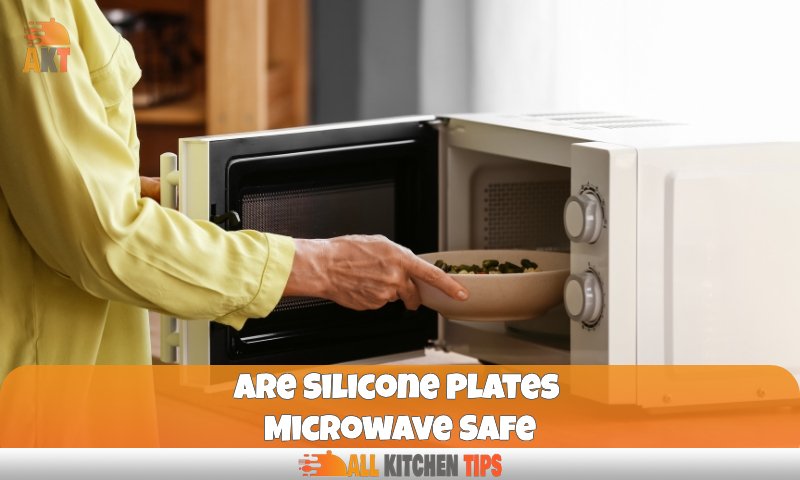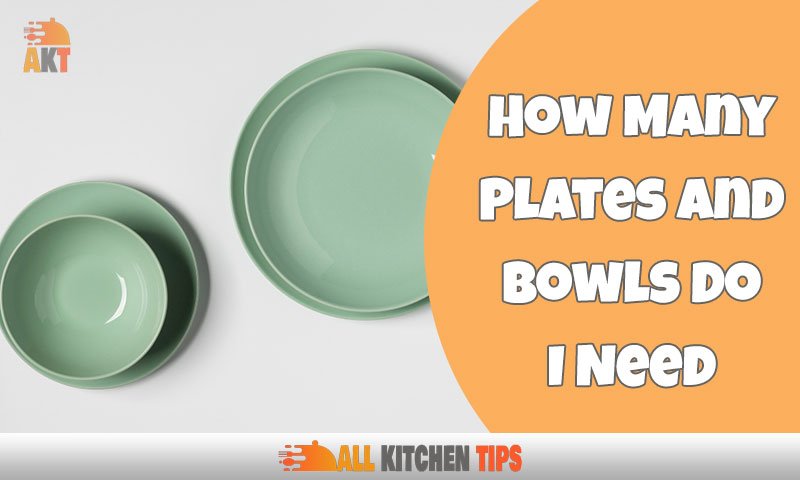Silicone plates are generally microwave-safe, but this depends on the quality and condition of the plates. Silicone plates have become a popular alternative to traditional plates due to their versatility, durability, and eco-friendly properties.
It is commonly used in households, daycare centers, hospitals, and restaurants. The material is known for being dishwasher-safe, freezer-safe, and microwave-safe. However, before microwaving silicone plates, it’s crucial to check if they are in good condition and suitable for microwave use.
In this article, we will dig deeper into the safety of using silicone plates in microwave ovens and find out whether they can be used without any concerns.
What Are Microwave Safe Silicone Plates
Silicone plates are a popular choice for toddlers and young children as they are durable, lightweight, and easy to clean. However, when it comes to microwave use, there is often some confusion about whether or not they are safe. In this blog post, we will explore what microwave-safe silicone plates are and why they are safe to use.
Definition Of Microwave Safe Silicone Plates
Microwave-safe silicone plates are plates that have been designed and tested to be used in a microwave without causing any harm to the plate or the food being heated. These plates are made from food-grade silicone, which is a non-toxic, BPA-free material that is safe for use around food.
Microwave-safe silicone plates feature the following characteristics:
- Heat-resistant: Microwave-safe silicone plates can safely withstand high temperatures without melting or warping.
- Non-stick: Silicone plates have non-stick qualities, making them easy to clean and preventing food from sticking to the plate.
- Dishwasher safe: These plates are also safe to clean in the dishwasher, making them a convenient option for busy parents.
Why Silicone Is Safe For Microwave Use
Silicone is a synthetic rubber-like material that has been used in various industries for many years. It is a safe material for use around food because it does not contain harmful chemicals such as BPA, lead, or phthalates. Here are some reasons why silicone is safe for microwave use:
- Heat-resistant: Silicone can withstand high temperatures without breaking down or releasing harmful chemicals. This makes it a safe material for use in the microwave, as it will not leach chemicals into the food being heated.
- Non-toxic: Silicone is a non-toxic material, which means that it will not harm the environment or human health. It is a safer alternative to plastic, which may contain harmful chemicals.
- Easy to clean: Silicone is a non-porous material, which means that it does not absorb food particles or odor. It is easy to clean and maintain, making it a hygienic option for plates and utensils.
Microwave-safe silicone plates are a great option for parents who want a safe, durable, and convenient plate for their children. These plates have been designed and tested to be used in the microwave without causing any harm to the plate or the food being heated.
Silicone is a safe material for use around food, and these plates offer many benefits, such as being heat-resistant, non-stick, and dishwasher-safe. With proper care and maintenance, microwave-safe silicone plates are a significant investment that can be used for many years to come.
Factors To Consider When Choosing Microwave Safe Silicone Plates
Are silicone plates microwave safe – factors to consider when choosing microwave-safe silicone plates
Silicone plates are becoming increasingly popular in modern kitchens, and it’s no surprise why. They are incredibly versatile and durable and can be found in various sizes, colors, and designs to match any kitchen décor.
Design and Size
When choosing microwave-safe silicone plates, there are several factors to consider. One of these factors is the design and size of the plate. Some key points to consider include:
- Look for plates with a non-slip and stable base to prevent spillage or accidents.
- Choose the size of the plate based on your specific needs and the size of your microwave. Smaller plates are easier to store, while larger plates can accommodate larger portions.
- Consider the shape of the plate. Round plates are the most common, but square or rectangular ones can also be found in the market.
Durability and Heat Resistance
Another important factor to consider when choosing microwave-safe silicone plates is the plate’s durability and heat resistance. Here are some key points to keep in mind:
- Look for plates made of high-quality silicone material that is durable and can withstand daily use.
- Check the heat resistance level of the plate to ensure it can be safely used in the microwave.
- Look for plates that are freezer-safe, dishwasher-safe, and oven-safe.
Ease of Cleaning and Maintenance
Finally, consider the ease of cleaning and maintenance when choosing microwave-safe silicone plates. Here are some key points to remember:
- Choose plates with a smooth surface for easy cleaning and prevent food from sticking to the surface.
- Look for plates that are dishwasher-safe for hassle-free cleaning.
- Consider plates that can resist stains, odors, and scratches to maintain their appearance even after repeated use.
When choosing microwave-safe silicone plates, consider factors such as design and size, durability and heat resistance, and ease of cleaning and maintenance. By carefully evaluating your specific needs, you can choose the perfect plate that is both practical and aesthetically pleasing for your kitchen.
The 9 Best Microwave Safe Silicone Plates
the 9 best microwave-safe silicone plates When it comes to convenience, silicone plates are a lifesaver. They are durable, easy to clean, and perfect for meals on the go. But are silicone plates microwave-safe? The answer is yes, they are! However, not all silicone plates are created equal. Some can only be used at certain temperatures, while others can be heated in the microwave without any issues. To help you choose the best microwave-safe silicone plates, we have put together a list of the top nine brands available on the market.
Plate 1: Weesprout Silicone Plates
- Made of 100% food-grade silicone
- Free from BPA, bps, PVC, lead, and phthalates
- Non-toxic, hypoallergenic, and antimicrobial
- Microwave, oven, dishwasher, and freezer safe
- Lightweight, durable, and stackable design
Plate 2: Bobo&Boo Silicone Plates
- Made of 100% eco-friendly silicone
- Free from BPA, bps, PVC, lead, and phthalates
- Non-toxic, sturdy, and shatterproof
- Microwave, dishwasher, and freezer safe
- Comes in a variety of colors that appeal to kids
Plate 3: Simka Rose Silicone Plates
- Made of 100% food-grade silicone
- Free from BPA, bps, PVC, lead, and phthalates
- Non-toxic, hypoallergenic, and eco-friendly
- Microwave, oven, freezer, and dishwasher safe
- Comes in a set of three different sizes
Plate 4: Avanchy Toddler Silicone Plates
- Made of 100% organic bamboo and BPA-free silicone
- Non-toxic, hypoallergenic, and antimicrobial
- Microwave and dishwasher safe
- Comes with a removable suction base that keeps the plate in place
Plate 5: Munchkin Silicone Plates
- Made of high-quality food-grade silicone
- Free from BPA, bps, PVC, lead, and phthalates
- Non-toxic, durable and impact-resistant
- Microwave, dishwasher, and freezer safe
- Comes in a set of two with cute animal designs
Plate 6: Kirecoo Silicone Plates
- Made of 100% food-grade silicone
- Free from BPA, PVC, lead, and phthalates
- Non-toxic, easy to clean, and durable
- Microwave, dishwasher, and freezer safe
- Comes with a suction base to avoid messy spills
Plate 7: Silikong Silicone Plates
- Made of 100% food-grade silicone
- Free from BPA, bps, PVC, lead, and phthalates
- Non-toxic, flexible, and lightweight
- Microwave, dishwasher, and freezer safe
- Comes in a set of three with lids
Plate 8: Babieb Silicone Plates
- Made of 100% food-grade silicone
- Free from BPA, bps, PVC, lead, and phthalates
- Non-toxic, dishwasher and freezer safe
- Microwave safe up to 400°f
- Comes in a set of three with different colors
Plate 9: Grabease Silicone Plates
- Made of 100% food-grade silicone
- Free from BPA, PVC, lead, and phthalates
- Non-toxic, dishwasher and freezer safe
- Microwave safe up to 500°f
- Comes with a suction base
When it comes to choosing microwave-safe silicone plates, it is important to read the labels and choose high-quality, non-toxic, and certified food-grade plates. By choosing from the 9 best microwave-safe silicone plates we have listed above, you can have peace of mind, knowing that you are investing in plates that are not only safe but also durable and convenient for daily use.
Pros And Cons Of Using Microwave Safe Silicone Plates
Are silicone plates microwave-safe? Pros and cons of using microwave-safe silicone plates
When it comes to safety in the kitchen, many people wonder if using silicone plates in the microwave is a good idea. Silicone is a synthetic material made of bonded silicon and oxygen that is highly heat-resistant and can handle temperatures up to 450 degrees Fahrenheit.
In this blog post, we will delve into the pros and cons of using microwave-safe silicone plates.
Advantages of Using Silicone Plates As Opposed To Glass and Plastic Plates:
- Microwave safe: One of the most significant benefits of silicone plates is that they are safe to be used in the microwave. You can heat your food quickly and easily with these plates without worrying about any harmful chemicals leaching into your food.
- Durability: Silicone plates can last much longer than glass and plastic plates. They are resistant to scratches and dents, making them an ideal choice for both indoor and outdoor use.
- Non-stick surface: Silicone plates have a non-stick surface, which makes them easy to clean. They do not absorb any odors or flavors, ensuring that your food tastes fresh every time you use them.
- Eco-friendly: Silicone is a sustainable and eco-friendly material that does not harm the environment. It is made of natural resources and can be recycled after use, making it a better option than plastic plates.
Disadvantages of Using Silicone Plates:
- Not microwave-safe at high temperatures: While silicone plates are microwave safe, they are not safe at high temperatures. If you leave them in the microwave for too long or heat them beyond their temperature range, they can release harmful chemicals into your food.
- Cost: Silicone plates can be more expensive than glass and plastic plates. However, their durability and longevity make them a better long-term investment.
- Not dishwasher safe: Some silicone plates cannot be cleaned in the dishwasher, which can be inconvenient for those who are looking for a quick and easy cleaning solution.
Silicone plates are a great option for those who want to heat their food quickly and easily in the microwave. They are durable, eco-friendly, and have a non-stick surface that ensures easy cleaning. However, it is essential to be careful when heating them in the microwave and not exceed their temperature range to avoid releasing harmful chemicals.
Finally, while silicone plates can be more expensive than glass and plastic plates, their durability, and longevity make them a worthwhile investment.
Care And Maintenance For Microwave Safe Silicone Plates
Care and maintenance for microwave-safe silicone plates have been steadily gaining popularity in recent years due to their many benefits, such as their durability, flexibility, and resistance to high temperatures. However, some people are still unsure whether silicone plates are safe for microwave use. In this section, we will discuss the care and maintenance of silicone plates to ensure their safety when used in microwaves.
How To Properly Clean And Store Silicone Plates
Silicone plates are easy to clean and maintain, and they can be washed using dish soap and warm water. However, it is important to avoid using abrasive cleaners or scrubbers, as they can damage the surface of the plate and cause it to degrade over time.
Follow these steps to properly clean and store your silicone plates:
- Rinse the plates with warm water to remove any food residues or debris.
- Apply a small amount of dish soap to the plate, spreading it evenly.
- Using a soft sponge or cloth, gently scrub the plate to remove any stains or discoloration.
- Rinse the plate with warm water again to remove any remaining soap.
- Air dry the plate or dry it with a clean towel.
When storing silicone plates, it is best to stack them one on top of the other to save space. However, make sure that the plates are completely dry before stacking them to prevent any moisture from getting trapped between the plates.
You can also use a dish rack to store your plates upright, which will ensure proper air circulation and prevent any mold or mildew growth.
Tips For Prolonging The Life Of Your Plates
Proper care and maintenance can help prolong the life of your silicone plates and prevent them from becoming damaged over time. Here are some tips to keep in mind:
- Avoid using sharp objects on the plates, such as knives or scissors, as they can cause scratches or cuts.
- Do not expose the plates to high temperatures, such as placing them directly on a hot stove or in an oven.
- Avoid using petroleum-based products on the plates, as they can cause the silicone to break down.
- Do not use silicone plates in the freezer, as they may become brittle and crack.
- Check the plates regularly for any signs of damage or degradation, such as cracks or tears.
By following these care and maintenance tips, you can be confident in using your silicone plates in the microwave without worrying about their safety. Not only will these tips help prolong the life of your plates, but they will also ensure that they remain in good condition for everyday use.
FAQs
Are Silicone Plates Microwave Safe?
Yes, silicone plates are microwave safe and can withstand high temperatures up to 450°F.
Do Silicone Plates Melt in The Microwave?
No, high-quality silicone plates are heat-resistant and won’t melt in the microwave.
Can You Put Hot Food on Silicone Plates?
Yes, silicone plates can serve hot food, as they don’t absorb heat and won’t burn your hands.
How Do You Clean Silicone Plates?
Silicone plates can be easily cleaned with soap and water or placed in the dishwasher for quick and hassle-free cleaning.
Conclusion
As you have read in this blog post, there are many factors to consider when it comes to whether or not silicone plates are safe for use in the microwave. While there are some potential risks involved, it is important to note that silicone plates are generally safe for microwave use as long as they are labeled as such and used and maintained correctly.
To ensure this, make sure to read the label and instructions that come with your silicone plates, always use them within the recommended temperature and time limits, and keep them clean and free from damage. By doing so, you can benefit from the convenience and practicality of microwave-safe silicone plates without putting your health or safety at risk.





